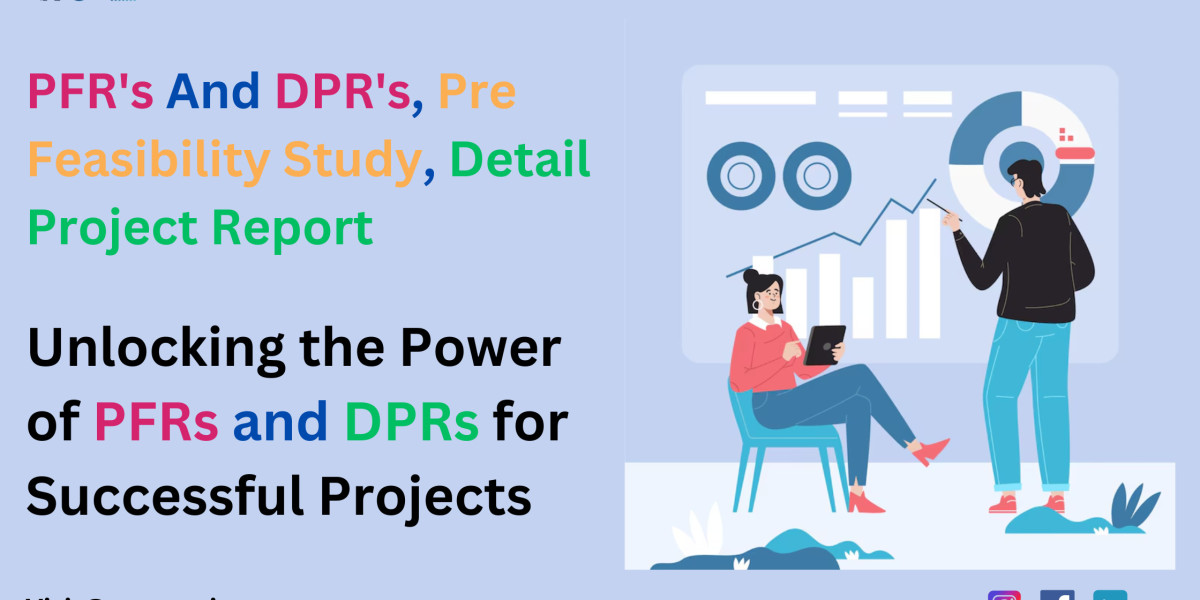Understanding Pre Feasibility Reports (PFRs) and Detailed Project Reports (DPRs)
When embarking on a new project, especially in industries such as construction, manufacturing, or energy, having a clear roadmap is crucial. This is where Pre Feasibility Reports (PFRs) and Detailed Project Reports (DPRs) come into play. These documents are vital in planning, evaluating, and successfully executing any significant project.
What is a Pre Feasibility Report (PFR)?
Pre Feasibility Study Meaning
A Pre Feasibility Report (PFR) is an initial study conducted to assess the viability of a proposed project. This report helps stakeholders understand the potential and feasibility of the project before committing significant resources. Essentially, it answers the question: “Is this project worth pursuing?”
Importance of Pre Feasibility Reports
Initial Evaluation: A PFR provides an early assessment of the project’s technical, economic, and financial feasibility.
Risk Mitigation: By identifying potential risks and challenges, a PFR helps in mitigating them early in the planning process.
Resource Allocation: It aids in determining the necessary resources, including time, money, and manpower, required for the project.
Decision Making: Stakeholders use the insights from a PFR to make informed decisions about whether to proceed with the project or not.
Components of a Pre Feasibility Report
A typical PFR includes the following elements:
Executive Summary: An overview of the project, including objectives and potential benefits.
Market Analysis: Evaluation of market demand, competition, and potential customer base.
Technical Feasibility: Assessment of the technical requirements and solutions for the project.
Financial Analysis: Preliminary financial projections, including costs, revenues, and profitability.
Risk Analysis: Identification of key risks and proposed mitigation strategies.
Regulatory and Legal Compliance: Overview of the regulatory environment and necessary compliance measures.
Detailed Project Reports (DPRs): The Next Step
Once the PFR indicates that the project is feasible, the next step is to prepare a Detailed Project Report (DPR). This comprehensive document provides an in-depth analysis and detailed plan for the project’s execution.
What is a Detailed Project Report?
A Detailed Project Report (DPR) is an extensive and detailed document that outlines every aspect of the project. It serves as a blueprint for the project’s implementation, covering technical, financial, and managerial aspects.
Importance of Detailed Project Reports
Comprehensive Planning: A DPR offers a thorough plan for executing the project, ensuring that all aspects are well-coordinated.
Budgeting and Funding: It provides detailed cost estimates and financial planning, which are crucial for securing funding.
Implementation Guidance: The DPR acts as a guide for project managers and teams, detailing the steps and resources required for successful execution.
Stakeholder Communication: It helps communicate the project’s scope, objectives, and plans to stakeholders, ensuring alignment and support.
Components of a Detailed Project Report
A typical DPR includes:
Project Overview: Detailed description of the project, including objectives and scope.
Technical Specifications: Comprehensive technical details and requirements.
Market Analysis and Strategy: In-depth market research and marketing strategy.
Financial Projections: Detailed financial analysis, including cost estimates, funding requirements, and profitability projections.
Implementation Plan: Step-by-step plan for project execution, including timelines and milestones.
Risk Management Plan: Detailed risk assessment and mitigation strategies.
Regulatory and Legal Compliance: Comprehensive review of regulatory requirements and compliance strategies.
How to Conduct a Pre Feasibility Study
Conducting a Pre Feasibility Study involves several key steps to ensure that all aspects of the project are thoroughly evaluated.
Steps in Conducting a Pre Feasibility Study
Define the Project Scope: Clearly outline the project’s objectives, scope, and goals.
Market Research: Conduct detailed market research to assess demand, competition, and potential customers.
Technical Analysis: Evaluate the technical requirements and feasibility of the project.
Financial Assessment: Perform preliminary financial analysis, including cost estimates and revenue projections.
Risk Assessment: Identify potential risks and develop mitigation strategies.
Regulatory Review: Review regulatory requirements and ensure compliance.
Prepare the Report: Compile the findings into a comprehensive Pre Feasibility Report.
Benefits of a Pre Feasibility Study
Early Identification of Issues: Detect potential challenges and address them early.
Informed Decision Making: Provide stakeholders with the information needed to make informed decisions.
Efficient Resource Utilization: Ensure that resources are allocated effectively and efficiently.
How to Prepare a Detailed Project Report
Preparing a DPR requires meticulous planning and detailed analysis. Here’s a step-by-step guide to creating an effective DPR.
Steps in Preparing a Detailed Project Report
Project Definition: Define the project in detail, including objectives, scope, and goals.
Market Analysis: Conduct thorough market research and develop a marketing strategy.
Technical Planning: Develop detailed technical specifications and requirements.
Financial Planning: Perform detailed financial analysis, including budgeting and funding plans.
Implementation Planning: Create a detailed implementation plan with timelines and milestones.
Risk Management: Develop a comprehensive risk management plan.
Regulatory Compliance: Ensure compliance with all regulatory and legal requirements.
Report Compilation: Compile all the information into a comprehensive Detailed Project Report.
Benefits of a Detailed Project Report
Detailed Roadmap: Provides a clear and detailed roadmap for project execution.
Financial Clarity: Offers precise financial planning and budgeting.
Risk Management: Enhances risk management through detailed analysis and planning.
Stakeholder Alignment: Ensures alignment and support from all stakeholders.
Conclusion
In the world of project management, Pre Feasibility Reports (PFRs) and Detailed Project Reports (DPRs) are indispensable tools. A PFR provides an initial assessment of a project’s feasibility, helping stakeholders make informed decisions about whether to proceed. Once a project is deemed feasible, a DPR offers a comprehensive blueprint for its successful execution.
By thoroughly evaluating technical, financial, and market aspects, these reports ensure that projects are well-planned and executed efficiently, mitigating risks and maximizing chances of success. Whether you’re planning a small-scale initiative or a large-scale venture, understanding and utilizing PFRs and DPRs can significantly enhance your project’s prospects.













